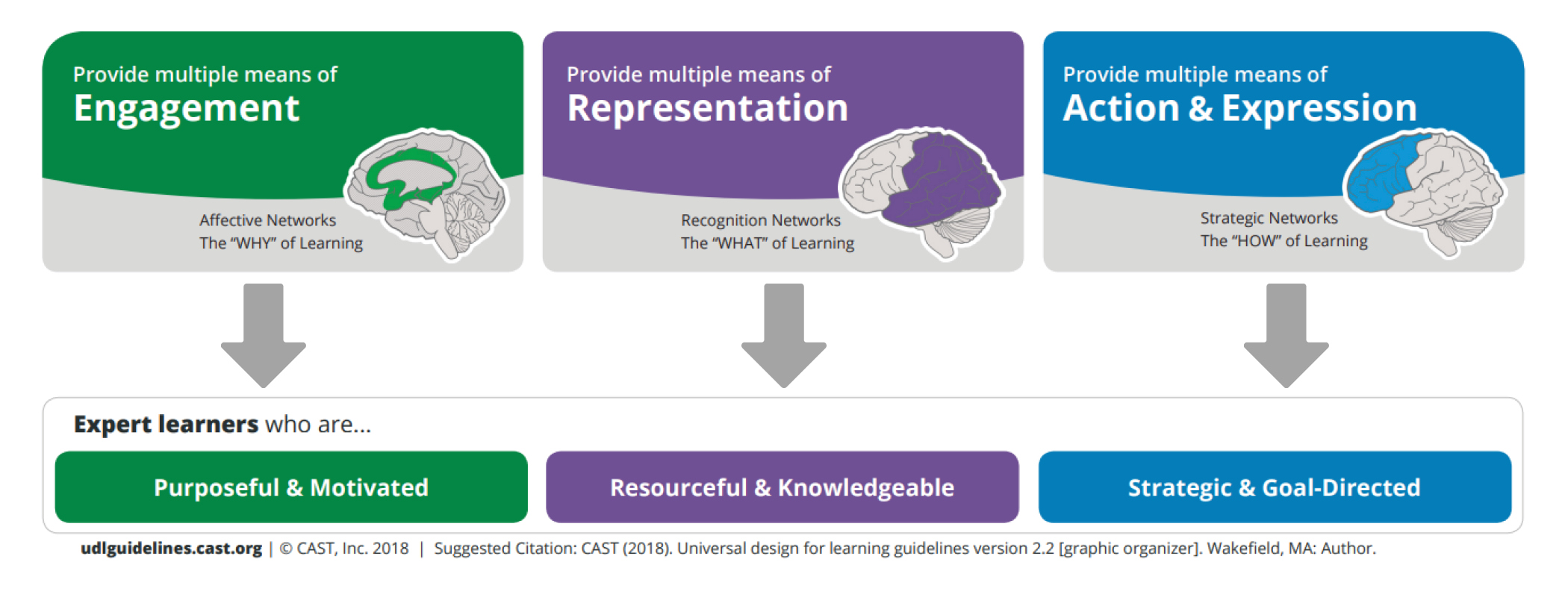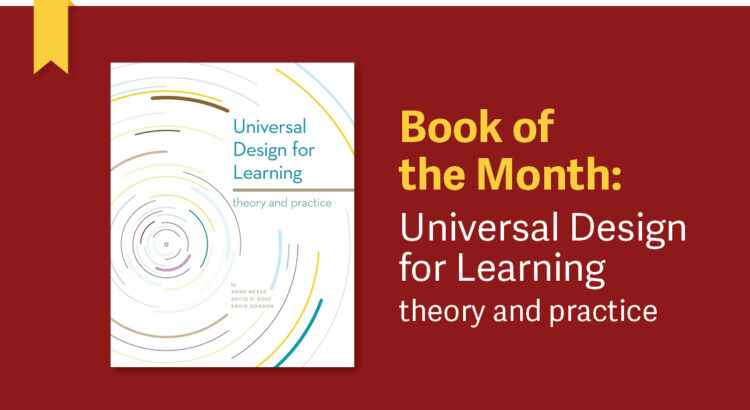Universal Design for Learning. Theory and Practice (2014)
By Anne Meyer, David Rose, and David Gordon. Published by CAST, Inc.
The needs of our students are changing and you’d like for your teaching to evolve too, but don’t know where to get started. Maybe you’ve attended a Universal Design for Learning (UDL) workshop at TCDC or already have a basic understanding of the framework. Regardless of where you are in your learning, CAST, the organization that led the research and development of UDL in the 1980s, has published a guidebook precisely for educators looking for a one-stop place to access the research, examples, and resources they need.
Universal Design for Learning. Theory and Practice, published in 2014, is a practical workbook for instructors. The large page-format punctuated with images and links to YouTube videos, as well as the Dig Deeper example sections, signal that readers should flip through with highlighters and sticky notes, rather than reading from beginning to end.
New to UDL?
If you do need an introduction to the history and research behind UDL, it is laid out concisely in the first four chapters. Even as a refresher, these chapters are a good reminder that UDL was designed to reduce structural barriers that are present in the curriculum and learning environment for all learners, not to accommodate individual students with specific disabilities or learning differences.
UDL addresses learner variability not to improve content mastery or uphold a false “norm” of student performance, rather to help all students become “expert learners,” who are: Purposeful & Motivated, Resourceful & Knowledgeable, Strategic & Goal-Oriented.

[The above graphic contains images of the affective, recognition, and strategic networks in the brain and connects the three main UDL principles to the development of expert learners. Multiple means of engagement lead to learners who are purposeful and motivated. Multiple means of representation lead to learners who are resourceful and knowledgeable. Multiple means of action and expression lead to learners who are strategic and goal-oriented.]
Next Steps
If you’re already comfortable with the basics of UDL and ready to get to work, then you can skip to chapters 5, 6, and 7. These final chapters discuss UDL as a flexible framework in course or lesson planning, as a guiding principle for curriculum design (including learning outcomes, assessment, teaching methods, and materials), and as a collaboration of practical examples from the field. Here’s where the majority of your sticky notes will end up as you link UDL ideas to concrete changes in your teaching, your course design, or your program curriculum.
Once you have read the book and get inspired to ask further questions, please reach out to tcdc@langara.ca or look for the upcoming January UDL workshop on the EdTech/TCDC Calendar. You can find this book in our TCDC library. Email TCDC to reserve your copy.

